Mining Ghost Towns of the American West: Gold Rush Era Relics
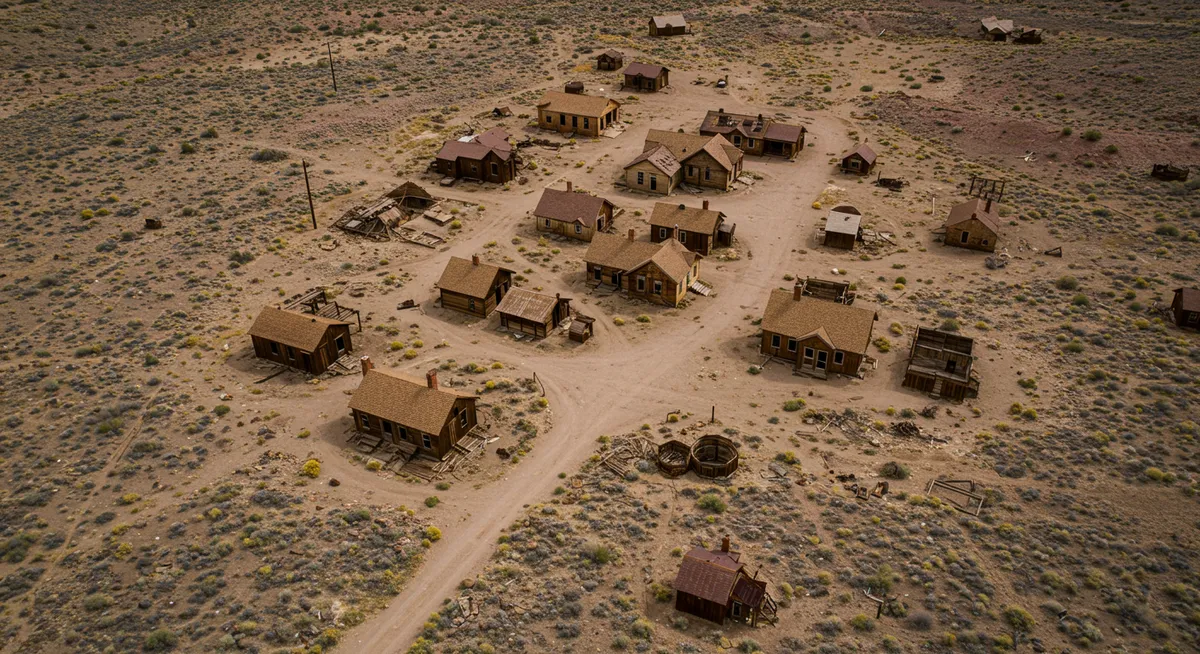
Mining Ghost Towns of the American West: Gold Rush Era Relics
Throughout the rugged landscapes of the American West stand the weathered remains of once-thriving communities—testaments to an era when the promise of mineral wealth drew thousands to remote mountain valleys and desert plateaus. These mining ghost towns offer visitors a compelling window into the boom-and-bust cycles that shaped the western United States, preserving stories of ambition, hardship, and resilience amid their crumbling structures and silent streets. From California's Sierra Nevada to the Rocky Mountains, these abandoned settlements provide some of the most atmospheric and historically significant destinations for travelers interested in America's frontier heritage.

The Historical Significance of Western Mining Ghost Towns
The ghost towns scattered across the American West represent more than just picturesque ruins—they embody critical chapters in the nation's westward expansion and industrial development:
- Gold and Silver Rush History: Many ghost towns emerged during the frenetic mineral rushes that began with California's 1849 Gold Rush and continued through the Comstock Lode, Colorado's silver booms, and beyond
- Industrial Evolution: These sites showcase the technological progression of mining from simple placer operations to complex industrial enterprises
- Cultural Melting Pots: Mining camps attracted diverse populations from around the world, creating unique multicultural communities on the frontier
- Economic Boom and Bust: The dramatic rise and fall of these towns illustrates the volatile nature of resource-dependent economies
- Architectural Heritage: From simple wooden structures to ornate Victorian buildings, ghost towns preserve distinct architectural styles that evolved in isolated western communities
While mining ghost towns focus on the dramatic life cycle of boomtowns, you might also be interested in exploring other types of abandoned settlements such as those created by transportation changes, environmental disasters, or historical shifts across different regions.
The Most Fascinating Ghost Towns in the American West
Our comprehensive collection of mining ghost towns highlights the most well-preserved and historically significant abandoned settlements across the western states. Each location offers a unique perspective on the mining frontier experience and provides different levels of accessibility and preservation.

Bodie, California: America's Best-Preserved Ghost Town
Explore California's official ghost town, preserved in a state of "arrested decay" with over 200 buildings still standing as they were left by the last residents.
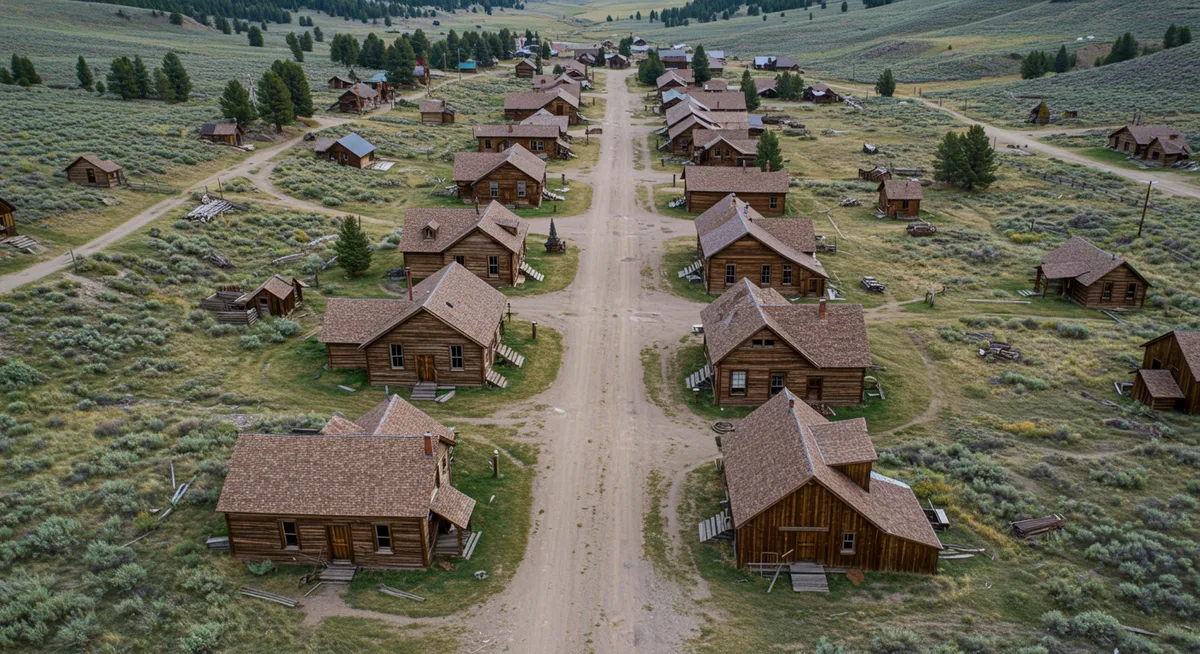
Bannack, Montana: Where Montana's Gold Rush Began (Coming Soon)
Walk through Montana's first territorial capital, now a ghost town with over 60 structures including the dramatic Masonic Temple and Hotel Meade.
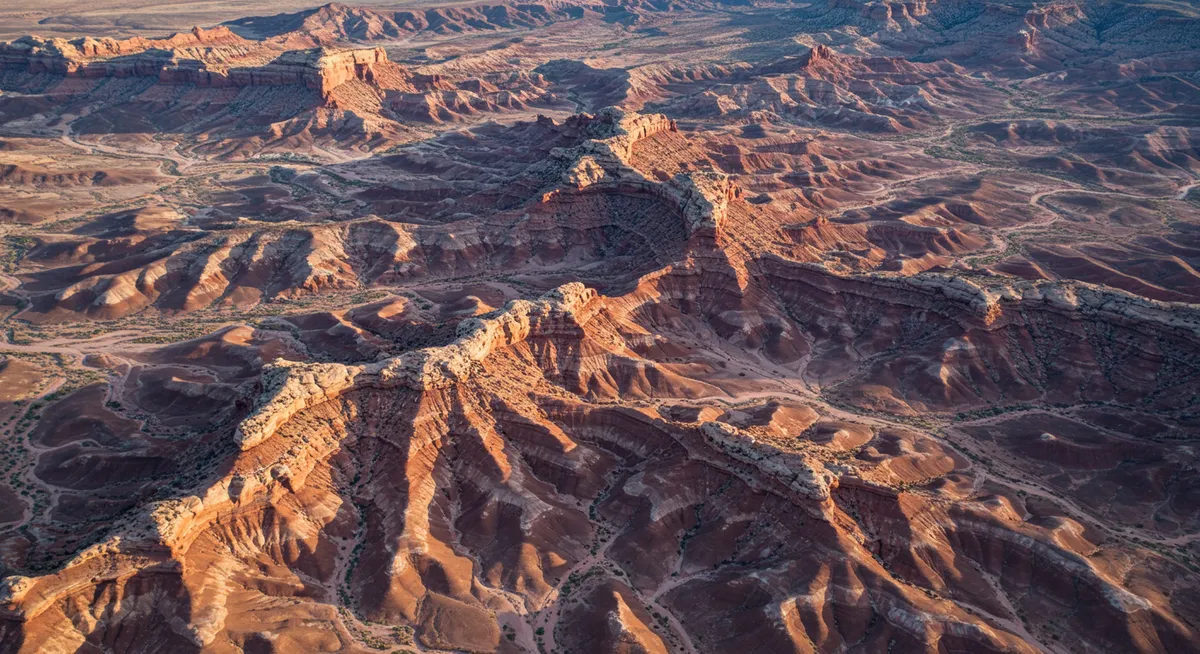
Silver Reef, Utah: The Impossible Silver Town (Coming Soon)
Discover the only silver mining town established on sandstone—a geological anomaly that created one of Utah's richest boomtowns before its sudden collapse.
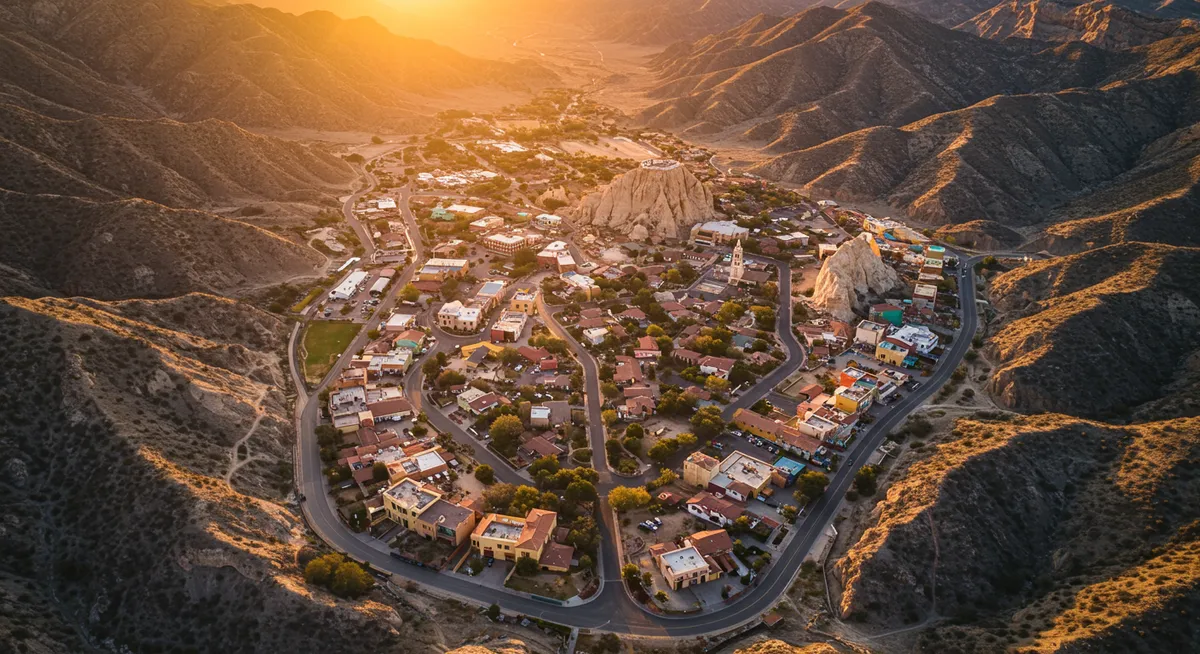
Calico, California: From Silver Boom to Tourist Attraction (Coming Soon)
Visit California's "Official Silver Rush Ghost Town," restored by Walter Knott and now offering a family-friendly window into mining history.
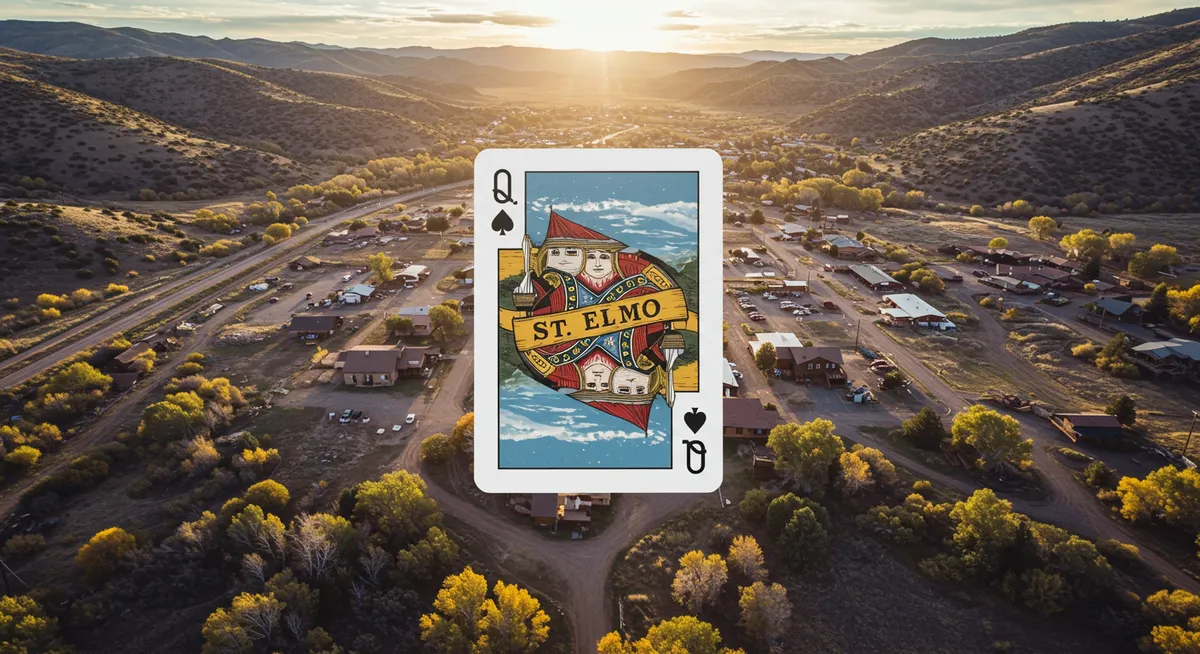
St. Elmo, Colorado: The Alpine Ghost Town (Coming Soon)
Explore one of Colorado's best-preserved ghost towns nestled in the Sawatch Range, with dozens of original buildings including the iconic general store.
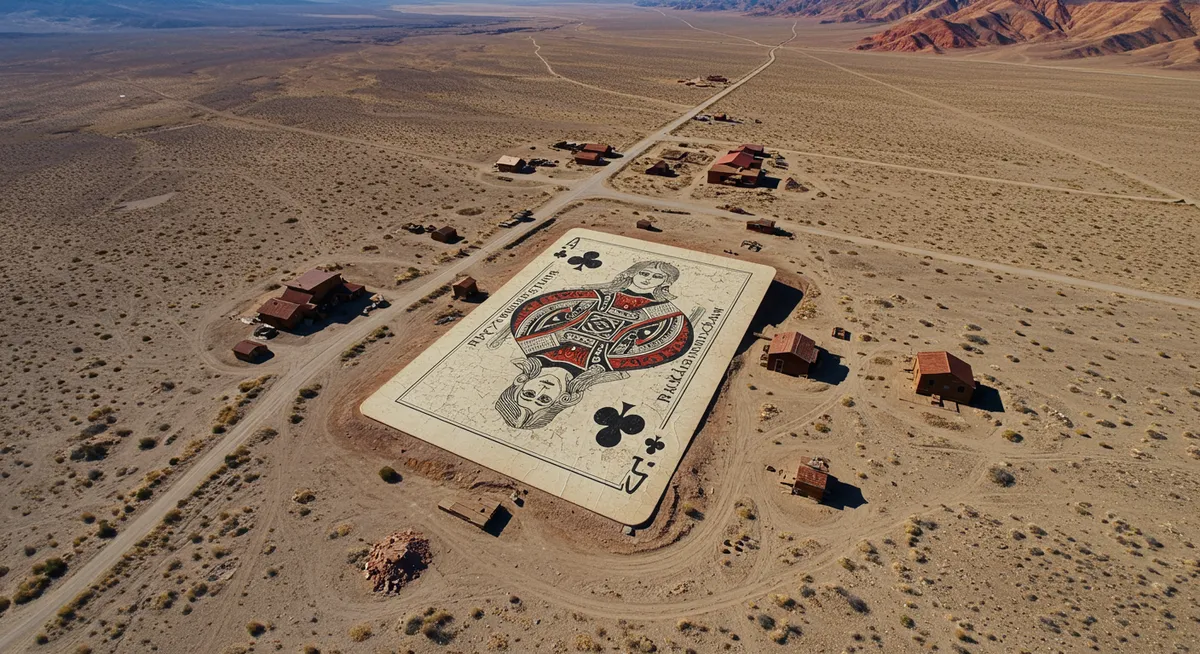
Rhyolite, Nevada: The Boom That Went Bust
Witness the dramatic ruins of what was once a promising city, where grand stone buildings now stand as monuments to one of Nevada's most spectacular mining collapses.

South Pass City, Wyoming: Gateway to the West (Coming Soon)
Visit the ghost town near the famous mountain pass that served as a crucial point on the Oregon Trail before becoming Wyoming's first gold boomtown.
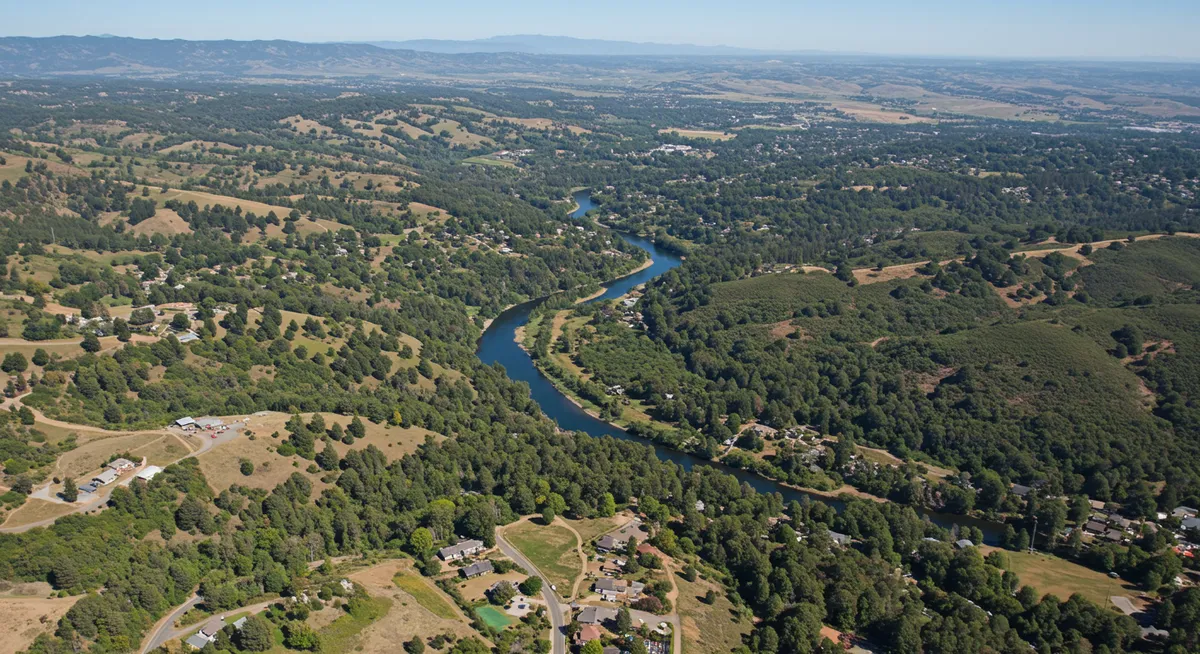
Columbia, California: The Gold Rush Town That Survived (Coming Soon)
Experience a different kind of ghost town—a former mining boomtown now preserved as a living history site where you can pan for gold and ride stagecoaches.
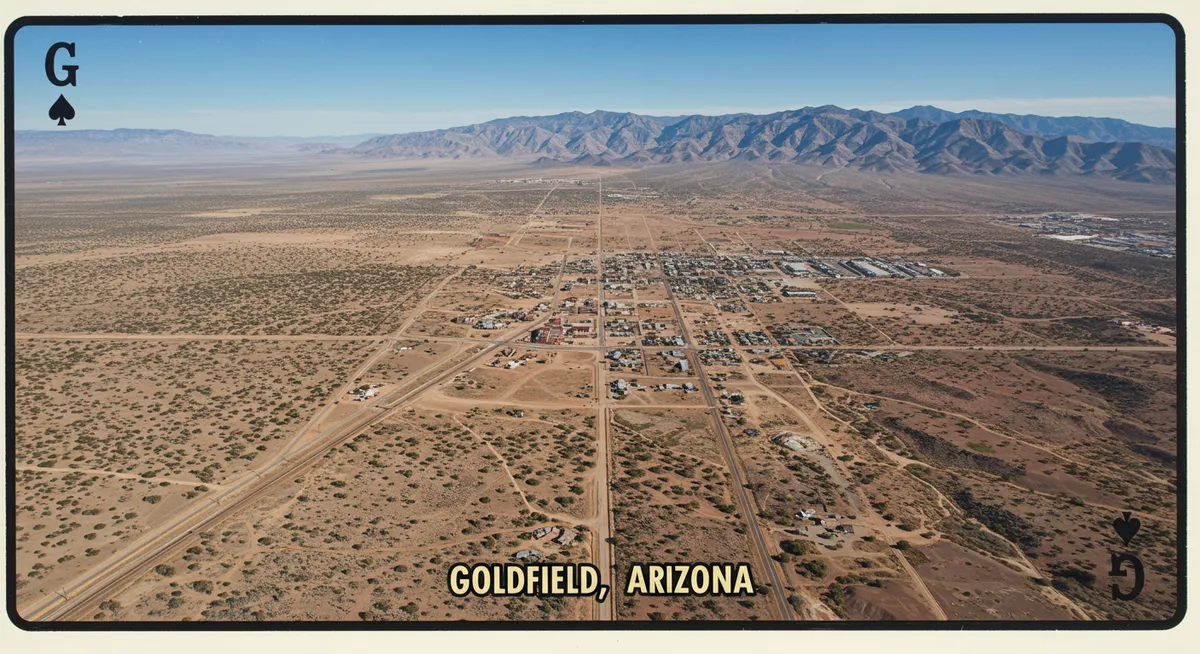
Goldfield, Arizona: Desert Mining Camp Reborn (Coming Soon)
Visit a reconstructed version of the 1890s boomtown near the Superstition Mountains, offering family-friendly attractions alongside historical exhibits.
Hidden Gems: Lesser-Known Ghost Towns of the American West
While the most famous ghost towns attract visitors from around the world, the American West is dotted with hundreds of lesser-known abandoned settlements that offer intrepid explorers a more solitary and often more authentic experience. These hidden gems typically feature fewer restored structures but provide a stronger sense of discovery and connection to the past.
Northern Rockies
- Marysville, Montana: Once home to the famous Drumlummon Mine, this partially abandoned town features stunning Victorian architecture and a blend of occupied and abandoned structures
- Custer, Idaho: This remote Salmon River settlement offers well-preserved stamp mills and mining equipment amid beautiful wilderness
- Kirwin, Wyoming: Accessible only by rough roads or hiking trails, this high-altitude mining camp features collapsed structures and spectacular mountain scenery
- Gilt Edge, Montana: Experience the quieter side of Montana's mining history at this seldom-visited site with remaining stone foundations and mine entrances
Desert Southwest
- Shakespeare, New Mexico: This privately-owned ghost town opens occasionally for tours, featuring well-preserved buildings and mining equipment
- Chloride, Arizona: A semi-ghost town with a handful of residents maintaining historical buildings alongside abandoned structures
- Gold Point, Nevada: Tucked away in Nevada's vast desert landscape, this remote settlement features wooden buildings and mining equipment with minimal restoration
- Grafton, Utah: A hauntingly beautiful Mormon settlement near Zion National Park with restored buildings set against dramatic red rock landscapes

Tips for Exploring Remote Ghost Towns
- Advanced Navigation: Bring detailed maps and GPS coordinates—many hidden ghost towns aren't on standard maps
- Vehicle Preparedness: High-clearance 4WD vehicles are often necessary, along with spare tires and recovery equipment
- Documentation: Research land ownership in advance—some sites may be on private property requiring permission
- Self-Sufficiency: Pack extra supplies as these locations may be hours from the nearest services
- Seasonal Planning: Many remote ghost towns are inaccessible during winter or rainy seasons
- Local Knowledge: Connect with historical societies in nearby towns for insider information and access tips
More American West Ghost Towns Coming Soon
We're continuously expanding our coverage of the American West's most fascinating ghost towns. Stay tuned for upcoming guides to more remarkable abandoned mining settlements:
- Virginia City, Nevada: The Comstock Lode Metropolis
- Elkhorn, Montana: The "Dead in Winter, Quiet in Summer" Mining Camp
- Ruby, Arizona: The Mining Camp Frozen in Time
- Mogollon, New Mexico: The Isolated Mountain Mining Town
- Cerro Gordo, California: The Silver City High in the Mountains
- Garnet, Montana: Montana's Best-Preserved Ghost Town
How to Experience Mining Ghost Towns Authentically
Mining ghost towns offer different kinds of visitor experiences, from well-maintained tourist attractions to remote ruins requiring backcountry exploration. Here are some tips for getting the most from your visit:
Choose the Right Type of Ghost Town for Your Interests
Western ghost towns generally fall into several categories that offer different visitor experiences:
- Preserved State/National Parks: Sites like Bodie offer the most authentic experience, with buildings maintained in "arrested decay" and excellent interpretive resources
- Reconstructed Tourist Towns: Places like Calico and Goldfield have been partially rebuilt and commercialized, offering family-friendly activities but less historical authenticity
- Remote Ruins: For the adventurous, sites like Cerro Gordo offer more challenging access but a more solitary and atmospheric experience
- Living History Towns: Some former mining towns like Columbia have evolved into living history museums with demonstrations and period-appropriate businesses
Time Your Visit Strategically
The harsh environments where many ghost towns are located mean that timing can dramatically affect your experience:
- Seasonal Considerations: Many high-elevation ghost towns are inaccessible in winter, while desert ghost towns can be dangerously hot in summer
- Lighting for Photography: Early morning and late afternoon offer the most dramatic lighting for capturing the weathered textures of ghost town buildings
- Special Events: Some sites host historical reenactments, night tours, or seasonal events that can enhance your experience
Bring the Right Equipment
Ghost towns often lack amenities and may present challenging conditions:
- Appropriate Footwear: Sturdy boots protect against uneven terrain, rusty nails, and desert wildlife
- Weather Protection: High elevations mean intense sun and sudden weather changes—bring sun protection, layers, and rain gear
- Photography Gear: Consider bringing graduated filters for bright Western skies, a polarizer to enhance the rich colors of weathered wood, and a tripod for low-light interior shots
- Vehicle Considerations: Many ghost towns require high-clearance or 4WD vehicles to access
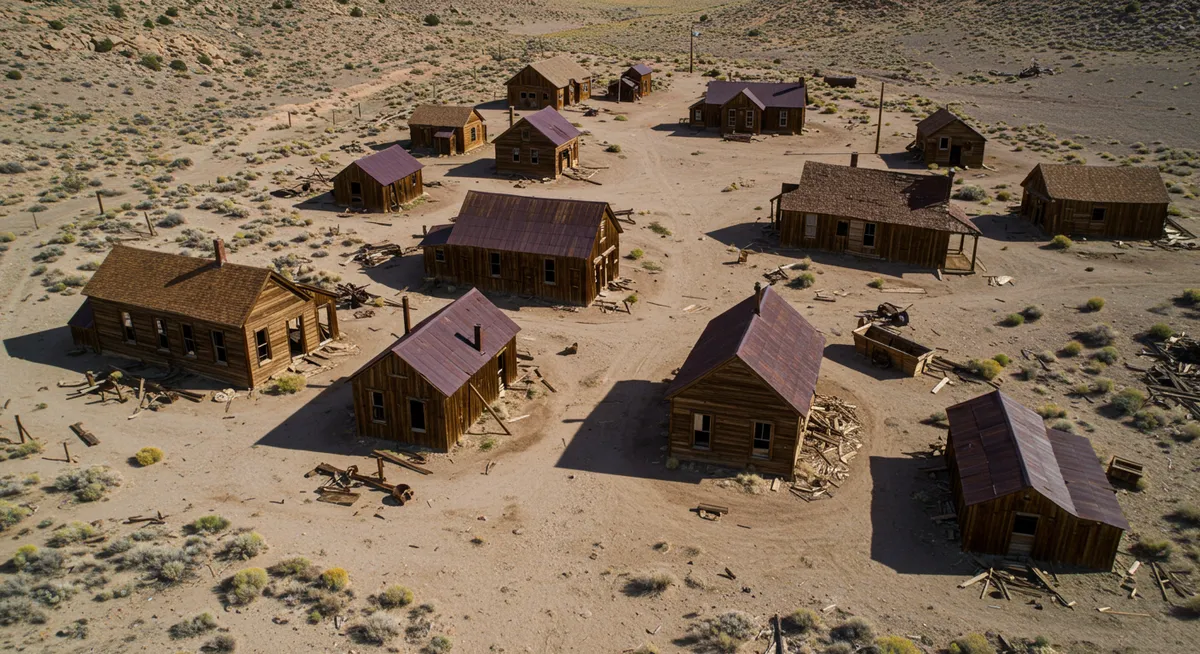
The Stories Behind the Abandonment
What makes Western mining ghost towns particularly fascinating are the dramatic narratives of their rise and fall. These common patterns help explain the cycle of boom and abandonment:
The Typical Boomtown Cycle
- Discovery: A prospector finds gold or silver, often by accident or through persistent exploration
- Rush: News spreads, triggering a flood of hopeful miners and the businesses that serve them
- Boom: As mineral extraction increases, substantial buildings replace tents, while amenities like theaters, hotels, and churches appear
- Industrialization: Individual prospectors give way to corporate mining operations with expensive equipment and wage laborers
- Decline: Ore quality diminishes, mining costs increase, or mineral prices drop, making operations unprofitable
- Abandonment: Operations cease, populations depart seeking new opportunities, and buildings are left to the elements
Common Causes of Abandonment
- Resource Depletion: The most common cause—simply running out of economically viable minerals to extract
- Market Crashes: The Silver Purchase Act of 1893 devastated silver mining towns overnight by dramatically lowering silver prices
- Transportation Changes: When railroads bypassed towns originally served by wagon routes, many lost their economic viability
- Natural Disasters: Fires were particularly devastating in hastily built wooden mining towns, while floods and avalanches claimed others
- Technological Obsolescence: Advances in mining technology sometimes made older operations uncompetitive
Ghost Towns vs. Modern Mining: Ethical Perspectives
Ghost towns provide important context for understanding contemporary mining issues in the American West. Today's visitors often find themselves reflecting on these connections:
Historical Lessons
- Environmental Legacy: Many ghost towns sit amid toxic tailings piles and contaminated watersheds—visible reminders of the environmental costs of unregulated extraction
- Boom-Bust Economics: The ruins illustrate the dangers of resource-dependent economies that fail to diversify
- Community Resilience: Some mining settlements successfully transitioned to new economies, while others failed—offering case studies in adaptation
- Historical Preservation: Well-preserved sites like Bodie State Historic Park demonstrate successful approaches to maintaining historical resources
Modern Connections
- Continued Resource Extraction: Many areas surrounding ghost towns see renewed mining activity using modern techniques
- Tourism Economy: Ghost towns themselves have become economic resources through tourism
- Land Use Conflicts: Debates continue over whether abandoned mining areas should be reclaimed, preserved as heritage sites, or reopened for extraction
- Cultural Identity: Mining heritage remains central to the cultural identity of many Western communities
Ready to explore American West ghost towns?
Dive into our collection of guides to discover these fascinating remnants of the gold and silver rushes.
Ghost Towns Across Different Regions
If you enjoy exploring the mining ghost towns of the American West, you might also be interested in these other types of abandoned settlements from around the world:
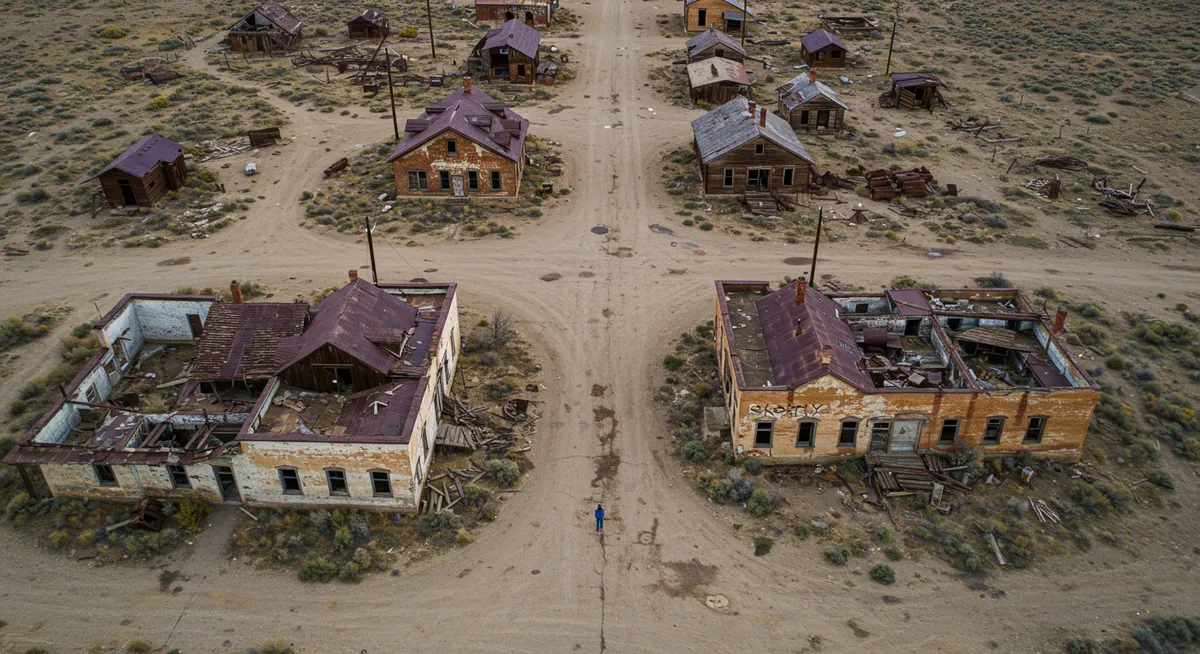
Explore Abandoned Ghost Towns Around the World
Discover a global perspective on abandoned settlements from nuclear disaster zones to ancient medieval villages.
Explore Other Types of Ghost Towns:
- Chernobyl's Abandoned Worlds (Coming Soon) - Witness the aftermath of nuclear disaster in Pripyat and surrounding villages
- Abandoned Medieval Villages of Europe (Coming Soon) - Discover ancient settlements frozen in time centuries ago
- Kolmanskop: Namibia's Desert Ghost Town - Explore a diamond boomtown being reclaimed by desert sands
- Gunkanjima: Japan's Abandoned Island City (Coming Soon) - Visit the concrete ruins of Hashima Island
- Humberstone: Chile's Desert Ghost Town (Coming Soon) - Walk through a UNESCO-protected saltpeter mining town
- Ghost Towns Along Route 66 (Coming Soon) - Discover communities bypassed by interstate highways
Perfect Pairings: Ghost Towns and National Parks
Many of the American West's most impressive ghost towns can be visited as part of a broader national park itinerary. Consider these complementary destinations:
California
Pair a visit to Bodie State Historic Park with nearby Yosemite National Park for a perfect combination of natural wonders and human history.
Nevada
Explore Rhyolite Ghost Town as part of a Death Valley National Park adventure, experiencing extreme landscapes and abandoned human endeavors.
California
Visit Cerro Gordo when exploring Death Valley or the Eastern Sierra, adding mining history to your nature itinerary.
Explore Our Ghost Town Guides by Region
North America
- Mining Ghost Towns of the American West
- Ghost Towns Along Route 66 (Coming Soon)
- Abandoned Coal Towns of Appalachia (Coming Soon)
- Canadian Mining Ghost Towns (Coming Soon)
International
- Chernobyl's Abandoned Worlds (Coming Soon)
- Abandoned Medieval Villages of Europe (Coming Soon)
- Kolmanskop: The Desert Ghost Town of Namibia
- Gunkanjima: Japan's Abandoned Island City (Coming Soon)
- Humberstone and Santa Laura: Chile's Desert Ghost Towns (Coming Soon)